Home > Ideas > Why Apple's 'Think Different' campaign worked so well (Jul '16)
Why Apple's 'Think Different' campaign worked so well
All good advertising follows a single law. The complex variations in medium, composition, typography and content are just the means of successfully fulfilling it. This law requires no statistical proof. It is fundamentally human. When you follow it your ads work and when you don't, they don't.
The following infographic explains the law of advertising and shows it in operation in one of the best campaigns of all time; Apple's Think Different campaign.

(If you can't see the infographic above check your ad blocking software hasn't mistakenly blocked it.)

Here’s to the crazy ones...

The Law of Advertising:
You get people to desire your brand or product by showing them a model who desires it.
How it works:

The whole dynamic:
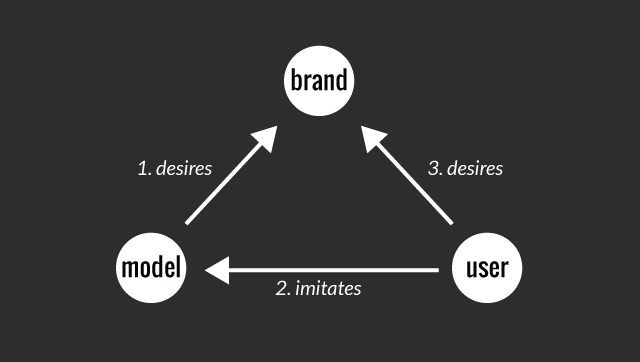
All ads present a (role) model:
Every medium of communication carries a message from one person to another. When it’s not clear who the model is, it’s the person sending the message. When there’s little or no information about this person (like in a simple text link) the end-user dynamically constructs him or her based on cues provided (typography, tone, language etc.).

Necessary conditions:
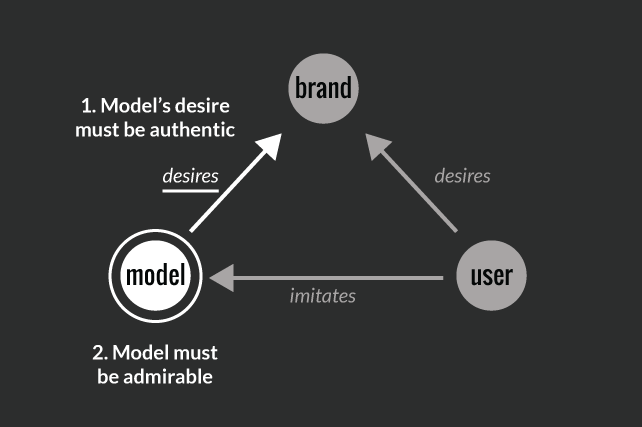
Necessity of authenticity:
Unauthentic desire doesn’t get imitated. Most ads are tainted by the advertiser’s desire to sell their own product. This has the unhappy consequence of producing the opposite of the desired effect. Instead of creating a desire to buy, the user is exposed to (and infected with) a desire to sell. Strangely, bad advertising encourages entrepreneurship (i.e. competition) rather than sales.
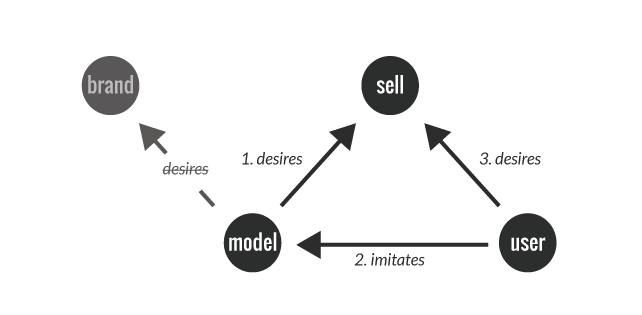
Necessity of admirability:
A model that is not admirable will not be instinctively imitated. This means that no desire (directed towards the brand or otherwise) will be generated in the user.

How the Think Different campaign applied the law and overcame the challenges:
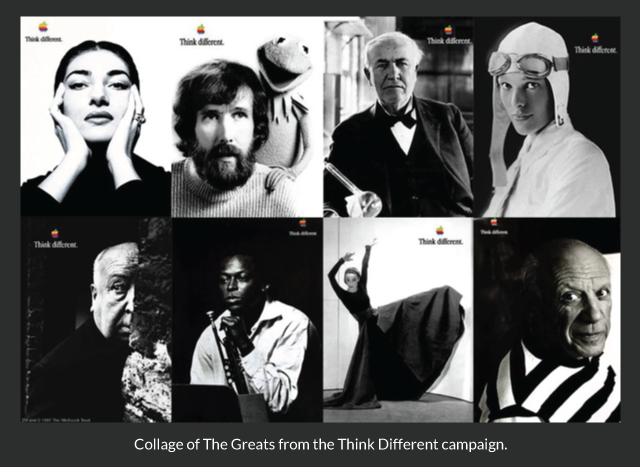
Some of them are living and some of them aren’t. But the ones that aren’t, you know that if they’d ever have used a computer it would have been a Mac.
High-level mechanism:
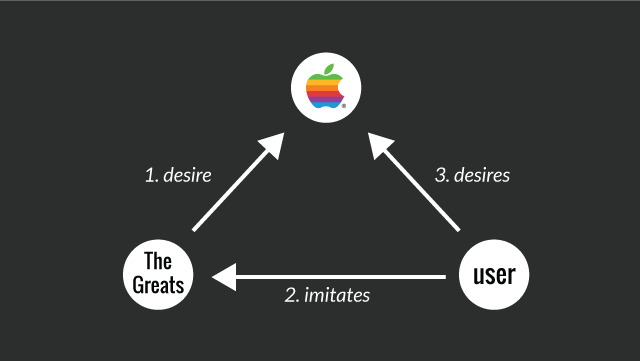
The figures used – here referred to as “The Greats” – are all universally admirable. This means that any desire they express is sure to be imitated by the viewing public. But directly ventriloquising deceased artists and thinkers would certainly come off as unauthentic and contrived. Only an indirect approach could ever work.
Indirection through admiration:
The only thing explicitly communicated by Apple is their admiration. This message, itself communicated authentically by an admirable model, creates (or redoubles) the user’s admiration for these figures.

Expressing identity through admiration:
Admiration is essentially the ‘desire to be’. So Apple is essentially saying ‘These are our models, we copy them.’ The logical conclusion of effective copying is to become identical with the original. Taking the message to its conclusion one reads ‘We are a copy’.
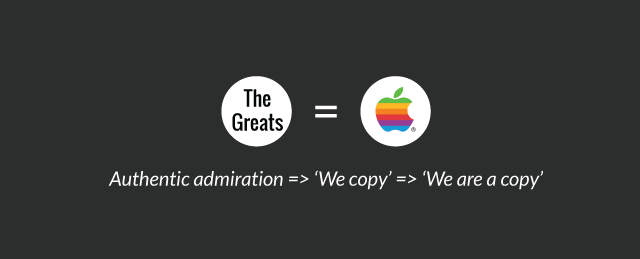
“The theme of the campaign is Think Different... It’s honoring the people who think different and move this world forward. And it is what we are about. It touches the soul of this company.”
‘Spiritual descendant’ of the Greats:
The more authentic and convincing the admiration, the greater the implication of identity. One is made to feel that Apple is a translated copy of these people and that they would actually use Apple given the opportunity. This is the final step that completes the mechanism and makes the campaign so powerful.

Liked this infographic? Here's another: Advertising Strategies Used by the World's Biggest Brands.
Attribution
(show)
by Aftab Singh, Founder of AdLove (@affalytics) | Ideas home














